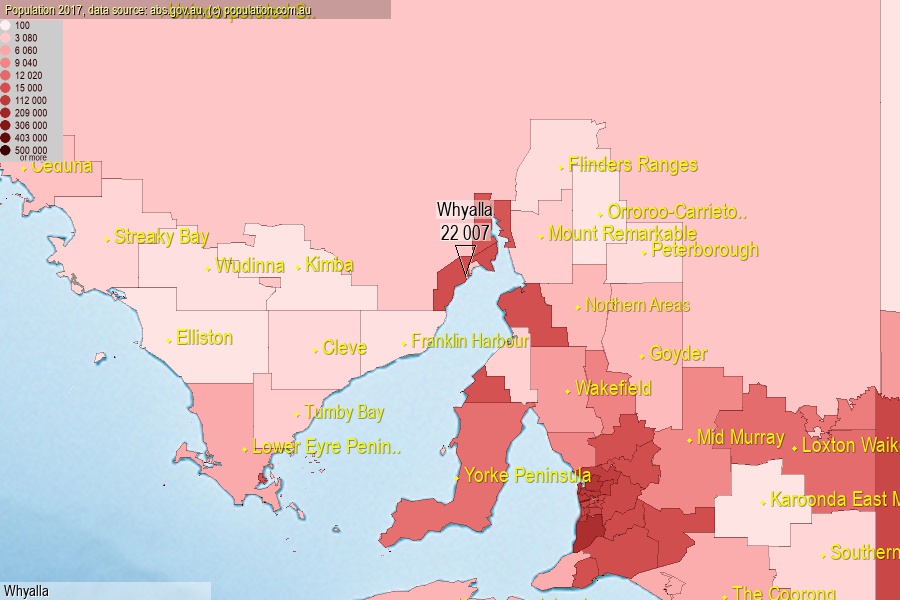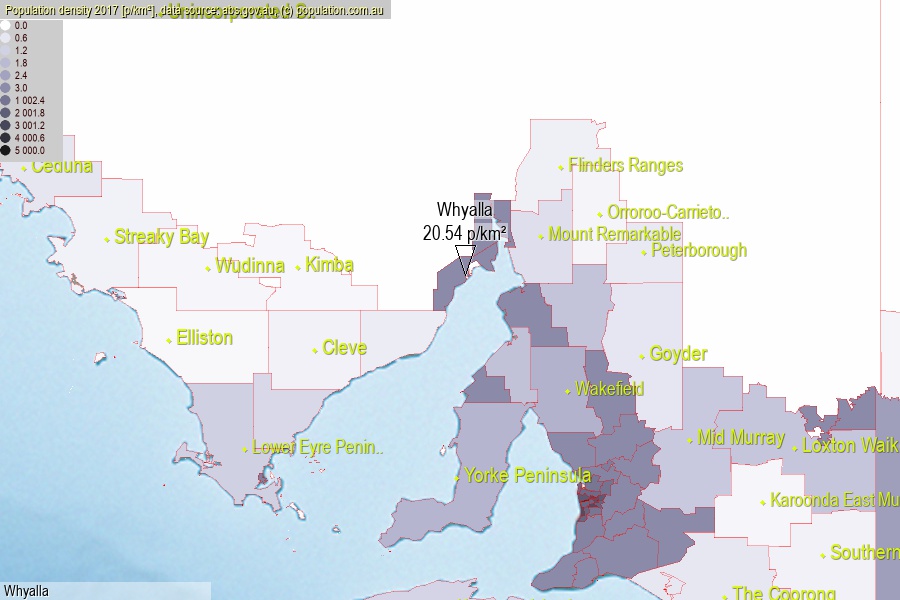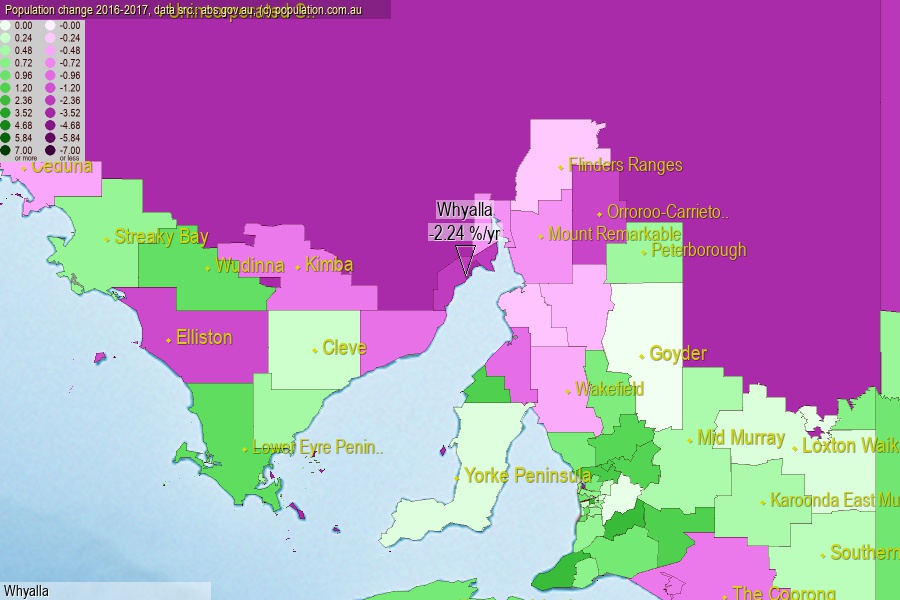 population.com.au
population.com.auLast official estimated population of Whyalla City (as Local Government Area) was 22 007 people (on 2017-06-30)[2]. This was 0.09% of total Australian population and 1.27% of SA population. Area of Whyalla is 1 071.60 km², in this year population density was 20.54 p/km² . If population growth rate would be same as in period 2016-2017 (-2.24%/yr), Whyalla population in 2025 would be 18 361. [0]



Click to enlarge. Whyalla is located in the center of the images.
Population [people], population density [p./km²] and population change [%/year] [2]
[1996-2001] -1.98 %/Y
[2001-2002] -0.18 %/Y
[2002-2003] -0.18 %/Y
[2003-2004] -0.10 %/Y
[2004-2005] -0.26 %/Y
[2005-2006] +0.45 %/Y
[2006-2007] +0.80 %/Y
[2007-2008] +0.50 %/Y
[2008-2009] +0.45 %/Y
[2009-2010] +0.55 %/Y
[2010-2011] +0.28 %/Y
[2011-2012] +0.25 %/Y
[2012-2013] +0.19 %/Y
[2013-2014] +0.19 %/Y
[2014-2015] -0.15 %/Y
[2015-2016] -0.70 %/Y
[2016-2017] -2.24 %/Y
[0] Calculated with linear interpolation from officially estimated population
[1] Read more about LGA and Australian Statistical Geography Standard (ASGS) on abs.gov.au
[2] Population data from Australian Bureau of Statistics (Population and density: 2017; change: 2016-2017)
[3] Digital Boundaries: Australian Statistical Geography Standard (ASGS) 2016.